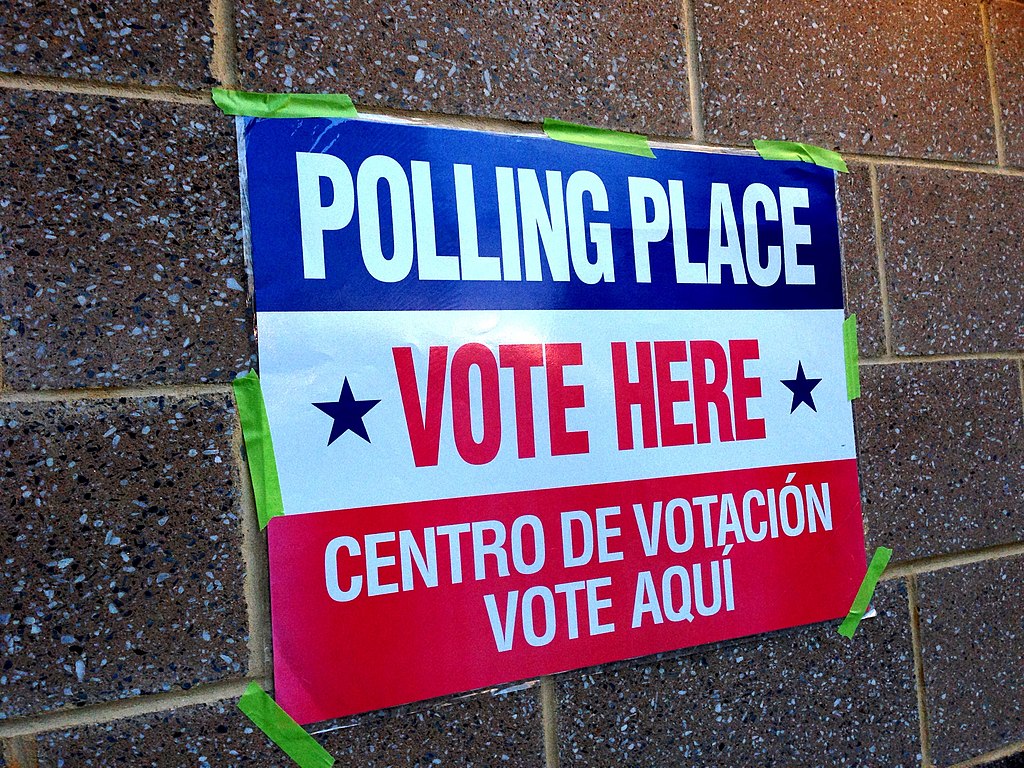Tag: election legislation tracker
-
Enactment rate of single-topic versus omnibus-style election bills on par with 2022
Posted on

The percentage of all enacted election-related bills dealing with single or multiple topics has stayed consistent from 2022 to 2023. As of May 2023, 53.5% of enacted bills address a single topic (61 of 114 bills), compared to 55.6% (158 of 284) of bills enacted by the end of 2022. Enactment of omnibus-style election bills,…
-
The Ballot Bulletin: Ballotpedia’s Weekly Digest on Election Administration, April 14, 2023
Posted on
Welcome to The Ballot Bulletin: Ballotpedia’s Weekly Digest on Election Administration. Every Friday, we deliver the latest updates on election policy around the country, including legislative activity, nationwide trends, and recent news. In today’s issue, you’ll find: Legislative activity: About the bills acted on this week and a big-picture look at all the bills we…
-
The Ballot Bulletin: Ballotpedia’s Weekly Digest on Election Administration, April 7, 2023
Posted on
Welcome to The Ballot Bulletin: Ballotpedia’s Weekly Digest on Election Administration. Every Friday, we deliver the latest updates on election policy around the country, including legislative activity, nationwide trends, and recent news. In today’s issue, you’ll find: Legislative activity: About the bills acted on this week and a big-picture look at all the bills we…
-
The Ballot Bulletin: Ballotpedia’s Weekly Digest on Election Administration, March 31, 2023
Posted on
Welcome to The Ballot Bulletin: Ballotpedia’s Weekly Digest on Election Administration. Every Friday, we deliver the latest updates on election policy around the country, including legislative activity, nationwide trends, and recent news. In today’s issue, you’ll find: Legislative activity: About the bills acted on this week and a big-picture look at all the bills we…
-
The Ballot Bulletin: Ballotpedia’s Weekly Digest on Election Administration, February 24, 2023
Posted on
Welcome to The Ballot Bulletin: Ballotpedia’s Weekly Digest on Election Administration. Every Friday, we deliver the latest updates on election policy around the country, including legislative activity, big-picture trends, and recent news. In today’s issue, you’ll find: Legislative activity: About the bills acted on this week. The big picture: Legislative status: The number of bills…
-
Introducing The Ballot Bulletin: Ballotpedia’s Weekly Digest on Election Administration
Posted on
Welcome to The Ballot Bulletin: Ballotpedia’s Weekly Digest on Election Administration. This is the first edition of a new and expanded version of this newsletter, now including both recent news related to election policy and in-depth data from our Election Administration Legislation Tracker. Every Friday, we’ll deliver the latest updates on election policy around the…
-
Election Legislation Weekly Digest: January 27, 2023
Posted on
Here is our weekly round-up on election-related legislation. In it, you’ll find the following information: Recent activity: Here, we report on the number of bills acted on within the past week. The big picture: Here, we look at the bills in the aggregate. Legislative status: How many bills have been introduced, voted upon, or enacted…
-
Election Legislation Weekly Digest: January 20, 2023
Posted on
Here is our weekly round-up on election-related legislation. In it, you’ll find the following information: Recent activity: Here, we report on the number of bills acted on within the past week. The big picture: Here, we look at the bills in the aggregate. Legislative status: How many bills have been introduced, voted upon, or enacted…
-
Election Legislation Weekly Digest: January 13, 2023
Posted on
Here is our weekly round-up on election-related legislation. In it, you’ll find the following information: Recent activity: Here, we report on the number of bills acted on within the past week. The big picture: Here, we look at the bills in the aggregate. Legislative status: How many bills have been introduced, voted upon, or enacted…
-
Election Legislation Weekly Digest: January 6, 2023
Posted on
Here is our weekly round-up on election-related legislation. In it, you’ll find the following information: Recent activity: Here, we report on the number of bills acted on within the past week. The big picture: Here, we look at the bills in the aggregate. Legislative status: How many bills have been introduced, voted upon, or enacted…

